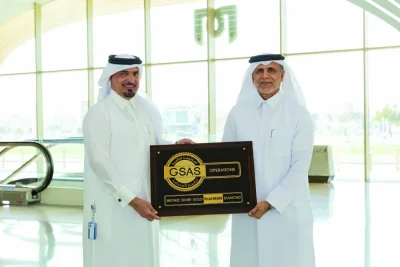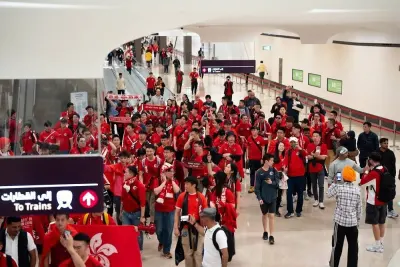By Joseph Varghese/Staff Reporter
A metro train can move around 60,000 people per hour in one direction which is equivalent to the traffic on 30 lanes in a road network or the number of passengers carried by some 30,000 cars, an expert in the field said yesterday.
Qatar which is now in the process of building a massive rail network, including a metro, stands to gain much if the service is used properly by the public, he opined.
Speaking exclusively to Gulf Times, Jitendra Tyagi, director of works, Delhi Metro Rail Corporation, (DMRC), India, said metro rail is safer, cheaper, faster and environment-friendly when compared to road transport in cities.
Tyagi was in town to speak at a technical seminar organised by ANECX Qatar, an Indian expatriate organisation.
According to him, Doha metro can help in easing the traffic congestion experienced in most parts of the city during peak hours and lead to development of areas far away from the city.
Tyagi said: “A metro has great environment benefits and can bring down pollution levels in a big way as the engines work on electricity. A metro train can carry around 60,000 people per hour in one direction which in effect will take away thousands of cars and other passenger transport vehicles from the roads, thus cutting down environmental pollution and traffic congestion.”
The official said that there were two reasons for constructing a metro rail. “One is when the road traffic becomes unmanageable; the other is when the project has been included in the development plan of a city which is called transit oriented development.”
He explained: “If you extend the metro to distant places from the downtown, people will be interested in constructing houses or developing their own businesses in those areas so as to avoid the traffic congestion in the city. This will enable development of places away from a city. People will start establishing new businesses, offices, residential compounds, entertainment centres and other facilities in these areas and that is how the metro system serves as the engine of development.”
However, he pointed out that metro stations would have to provide connectivity to nearby places that people wanted to reach. “Reliable and comfortable public transportation from the metro stations has to be part of the metro project as people cannot be asked to walk to their final destinations.”
Tyagi pointed out that convenience, safety and affordability were the major advantages of a metro rail system. “People can get connected to different places in the city at a cheaper cost. It is faster than road transport in cities which witness heavy traffic. Moreover, it is very safe compared to road transport.”
He admitted that even in cities where the metro was available, many people still preferred to travel in their own vehicles. “But in New Delhi, young people have shown great fascination for metro transport. They find it faster than road transport and less tiring than driving through the busy roads.”
The Indian rail official said that about 2.5mn people travelled by Delhi Metro every day. “The number of cars on the city roads has come down in a big way. If the metro had not been in place, the whole city of Delhi would have come to a standstill now. Because of the metro, traffic congestion in the nation’s capital city has been reduced to a great extent. Now, Delhi is comparatively in a better position - transport wise - than Mumbai or other major cities in the country.”
The metro train service was introduced to Delhi in 2002.

Jitendra Tyagi: Doha visit


